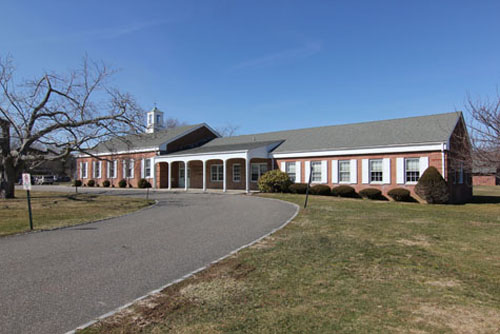Oysterponds narrows secondary school options to Greenport, Mattituck

Where will Orient and East Marion junior and senior high school students attend class next year? That’s very much up in the air.
The Oysterponds school board announced this week it has submitted secondary school contract proposals to both the Mattituck and Greenport school districts. Oysterponds currently sends its junior and senior high school students to Greenport, its neighboring school district.
The board ruled out Shelter Island because of transportation issues and the Southold school district was not interested. Southold currently accepts the New Suffolk school system’s secondary students.
During the Oysterponds school board’s Tuesday meeting, over 30 people listened as board president Deborah Dumont explained the district’s options, which aren’t simple.
According to state law, the district must designate its secondary school — or schools — by April 1. But since that falls on a Sunday, Oysterponds has decided to hold the meeting on April 2.
Although Oysterponds and Greenport have a long record of cooperation, the contract has been a source of contention for several years.
In 2010 a lame duck Oysterponds board approved a two-year extension to the pact, in which Greenport receives about $1.4 million to provide secondary education for roughly 78 students from East Marion and Orient. Under that extension, the districts would have been linked through June 2014. But when the new board took office the following month, it both eliminated the extension and cut a year off what was then a three-year agreement. As a result, the contract expired last June.
Greenport objected, but the state education department ruled Oysterponds was within its rights to shorten the deal.
If Oysterponds chooses both Mattituck and Greenport, parents can decide to send their children to either one. Ms. Dumont stressed that Oysterponds students currently enrolled in Greenport will be allowed to continue their education there even if the board approves a contract with Mattituck. In 2009, the board agreed to give parents a choice if the district decided to change high schools.
The Oysterponds board considered adding Mattituck last year but agreed to remain with Greenport only after hearing from a group of students and parents who made a sometimes emotional plea to keep the two schools united, saying they “bleed purple,” a reference to Greenport’s school colors.
“What doesn’t Greenport have that you want?” Greenport teacher Cynthia Goldsmith Agosta, whose mother, Linda Goldsmith, serves on the Oysterponds board, asked last year. “Greenport is not a failing school. We all know that academics have never been the real issue.”
As the school board explained the options this week, some parents again expressed their concerns, although the pro-Greenport sentiment was not unanimous as it was last spring.
One parent who asked the board to maintain the status quo said she specifically moved into the Oysterponds district because she wanted her children to attend both Oysterponds and Greenport schools. Another parent disagreed, saying he’s so dissatisfied with Greenport that he’s willing to pay $16,000 in tuition costs to send his two children to Bishop McGann-Mercy, a private Catholic school in Riverhead.
With less than two weeks to go, school board members said they’re taking several details into consideration before making a decision.
One issue is transporting students to Mattituck, nearly 17 miles away. If Oysterponds designates Mattituck as its secondary school, residents must then vote to approve transportation costs because state law requires a referendum if a secondary school is more than 15 miles distant.
Should the referendum fail, parents would be responsible for transporting their children to and from Mattituck.
Transportation might not be the only issue put to a referendum.
If Oysterponds enters into a secondary school contract up to two years, the board has the power to execute that deal without voter approval. But if the agreement runs over two years, up to five years, then state law says the public must have the opportunity to vote.
“It is the role of the board of education to designate the district or districts because we’re in charge of the education for children,” Ms. Dumont said. “The contract is a separate matter. It’s a financial matter.”
Tina Volinski, president of the Greenport school board, expressed dismay that the Oysterponds board’s actions come so late in the process of developing a school budget for the 2012-13 school years. Local school budgets go before voters in May.
“Greenport has budgeted for all of Oysterponds students,” Ms. Volinski said. “Not receiving two or three will affect our budget and current programs.”
As a result, Greenport may be forced to cut programs such as advanced placement classes, sports teams and possibly teaching staff.
“It’s devastating to our school,” she said. “Maybe not this year or next year, but 10 years down the road.”








